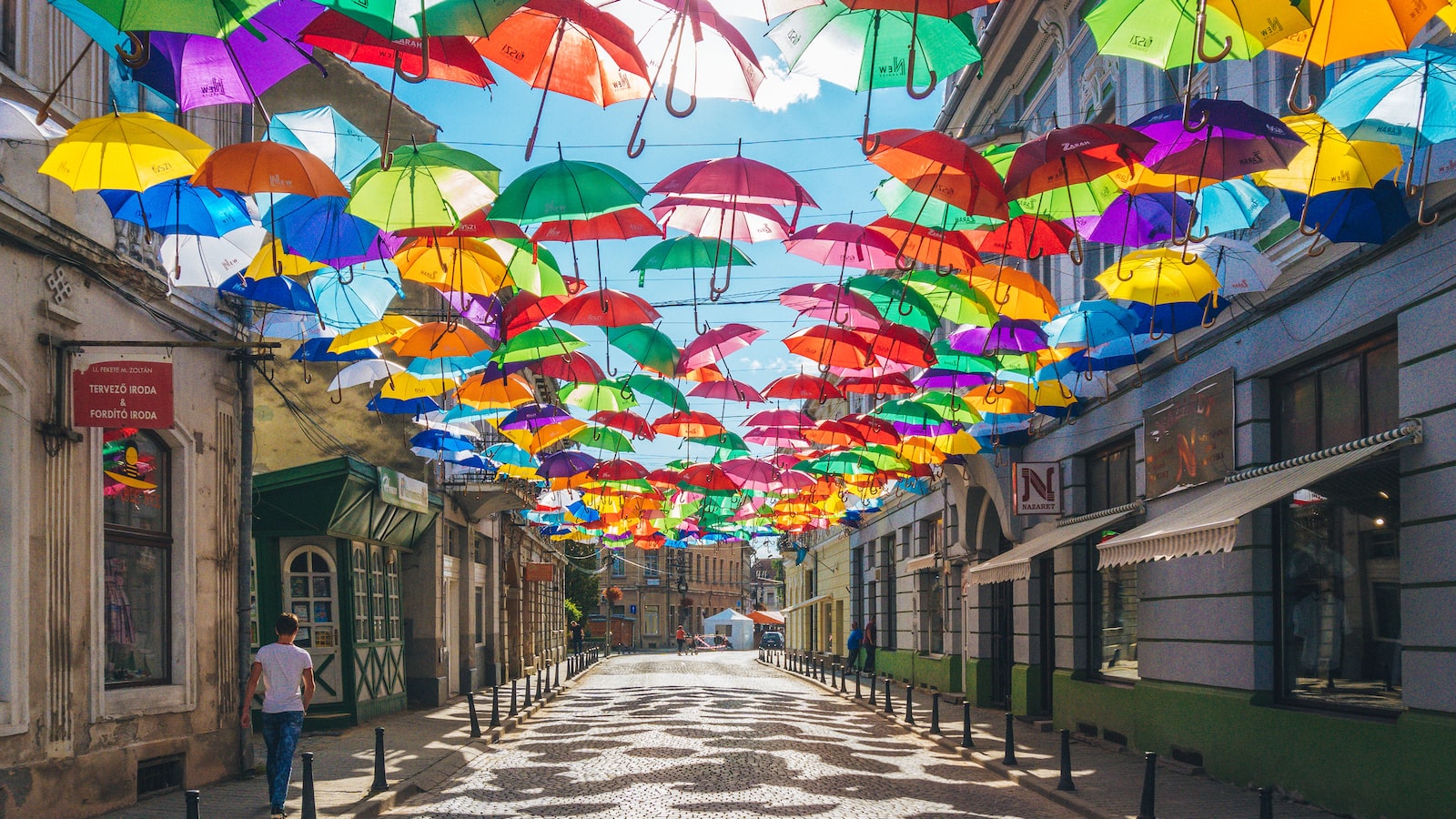In the vibrant tapestry of cultures that adorn the European continent, Romania stands as a linguistic mosaic, where the symphony of languages intertwines harmoniously. From the mellifluous Romanian spoken by the majority, to the enchanting melodies of Hungarian reverberating in certain regions, this intriguing nation teems with linguistic complexities that beckon exploration. Join us on a fascinating journey as we unravel the intricate threads of Romania’s languages, delving into the fusion of rich history, cultural heritage, and melodic diversity that shapes this captivating linguistic landscape. Brace yourself for an odyssey through the linguistic labyrinth, where Romanian and Hungarian intertwine, creating a linguistic dance echoing through the ages.
The Multilingual Landscape: An Overview of Romania’s Language Diversity
Romania is a fascinating country with a rich and diverse linguistic landscape. Exploring Romania’s language diversity is like embarking on a captivating linguistic journey through time and culture. From the official language, Romanian, to the multitude of minority languages spoken in different regions, Romania is a true multilingual haven.
With its roots in Latin, Romanian serves as the foundation of communication in the country. However, Romania’s multicultural heritage extends far beyond its official language. In various regions, you will encounter communities speaking Hungarian, German, Ukrainian, Serbian, or Russian. These minority languages are not only preserved but cherished, contributing to the vibrant tapestry of Romania’s linguistic heritage. The diverse languages spoken in this beautiful country foster a sense of cultural unity and understanding among its inhabitants.
- Ancient Origins: Romanian, a Romance language, evolved from Latin and shares many similarities with Italian, Spanish, Portuguese, and French.
- Multicultural Hubs: In cities like Timișoara and Cluj-Napoca, you’ll find a vibrant blend of languages spoken due to their ethnically diverse populations.
- Regional Enclaves: Areas such as Transylvania and Moldova are home to various minority languages, preserving unique cultural identities and traditions.
- Transylvanian Saxons: The German-speaking community in Transylvania, known as the Transylvanian Saxons, has played a significant role in shaping the region’s cultural landscape.
- Language Endangerment: While the process of globalization has impacted some minority languages, efforts are being made to revitalize and safeguard their use, ensuring the preservation of linguistic diversity in Romania.
This glimpse into Romania’s language diversity merely scratches the surface, inviting you to delve deeper into this linguistic symphony that captivates both locals and visitors alike. Romania’s multilingual landscape stands as a testament to the country’s rich history, cultural identity, and respect for linguistic heritage.

An In-depth Analysis of Romanian Language: History, Grammar, and Phonetics
Romanian, also known as Daco-Romanian, is an Eastern Romance language with fascinating historical roots and unique linguistic features. Originating from the Latin spoken in the Roman province of Dacia (modern-day Romania), Romanian has evolved over centuries, incorporating influences from various neighboring languages such as Slavic, Greek, Turkish, and Hungarian. This linguistic blend has resulted in a beautiful and distinctive language that holds a prominent place among the Romance languages.
Grammatically, Romanian shares similarities with other Romance languages, yet it possesses its own set of intricacies. Nouns in Romanian are gendered, with masculine and feminine genders, and they inflect for case: nominative, accusative, dative, and genitive. Romanian also features a rich verb system, comprising tenses, moods, and aspects, allowing for precise expression of actions and states. Additionally, the language employs definite and indefinite articles, possessive adjectives, and prepositions to establish relationships between words in sentences.
- Phonetics:
From a phonetic standpoint, Romanian exhibits notable peculiarities. It contains a total of seven vowels, with unique nasalized sounds available in certain dialects. The consonant inventory is rich, including both voiced and voiceless consonants, affording the language a melodic and expressive quality. Furthermore, Romanian is characterized by palatalization and vocalic harmony, which influence the pronunciation of certain sounds and contribute to the musicality of the language.

Exploring the Intricacies of Hungarian: Language Features and Cultural Significance
Delving into the rich tapestry of Hungarian language features provides a fascinating glimpse into the unique linguistic landscape of Central Europe. From its complex grammar to its distinctive vocabulary, Hungarian stands as an intricate and captivating language. One remarkable aspect is the presence of cases, offering speakers a range of ways to convey grammatical relationships within a sentence. With a total of eighteen different cases, Hungarian allows for precise expressions and clarifications that contribute to its artistic value.
Adding to its allure, Hungarian boasts a plethora of compound words that reflect the amalgamation of cultural influences throughout history. This fusion is reflected in vocabulary that combines nuances from Turkish, Slavic, and Germanic languages, showcasing Hungary’s rich historical and cultural ties. Additionally, Hungarian takes pride in its agglutinative nature, enabling speakers to effortlessly build new words by attaching various suffixes, expanding the linguistic horizons and fostering a sense of creativity.
- 18 different cases offer precision and expressive capacity.
- Fusion of vocabulary from Turkish, Slavic, and Germanic languages.
- Compounds words reflect Hungary’s historical and cultural influences.
- Agglutinative nature allows for the creation of new words through suffixes.
Unraveling the intricacies of Hungarian goes beyond the linguistic realm, as the language holds great cultural significance. It serves as an emblem of national identity for the Hungarian people, firmly rooted in their history and heritage. Hungarian poetry and literature capture the essence of their society, conveying emotions and experiences that resonate deeply with its speakers. Through its unique phonetic features, rhythm, and intonation, the language breathes life into their stories and traditions.
Furthermore, the Hungarian language acts as a bridge to connect individuals within the country and beyond. With over 15 million speakers worldwide, it fosters a sense of unity and belonging among the Hungarian diaspora. This linguistic bond creates avenues for cultural exchange, enabling the preservation and promotion of Hungarian traditions, values, and shared experiences. As the language continues to evolve, its intrinsic value remains a cornerstone of Hungary’s cultural heritage.
- Hungarian holds cultural significance and represents national identity.
- It is a means to convey emotions and experiences through poetry and literature.
- Connects the Hungarian diaspora and fosters cultural exchange.
- Preserves Hungarian traditions, values, and shared experiences.

Preservation and Promotion: Strategies for Sustaining Linguistic Harmony in Romania
In Romania, a country known for its rich linguistic diversity, sustaining linguistic harmony is crucial for fostering cultural unity and preserving national heritage. With a multitude of languages spoken across the land, implementing effective strategies becomes essential to ensure that each language flourishes while promoting intercommunication and understanding. Here are some innovative approaches that can contribute to preserving and promoting linguistic harmony in Romania:
- Language Revival Initiatives: Supporting grassroots efforts to revitalize endangered languages can empower local communities and preserve their unique linguistic traditions. Encouraging language courses, workshops, and cultural events can help reignite interest and pride in minority languages, fostering a sense of belonging and cultural appreciation.
- Bilingual Education: Implementing bilingual education programs in schools with a focus on the national language and minority languages can nurture inclusivity and provide opportunities for students to become proficient in both languages. These programs not only promote linguistic diversity but also prepare students for future multicultural experiences and careers.
- Media and Technology: Utilizing digital platforms and media outlets to showcase the beauty and importance of different languages can increase public awareness and encourage linguistic diversity. Creating podcasts, documentaries, and online resources about language history, literature, and cultural aspects can inspire interest and pride in linguistic heritage.
By combining these strategies, Romania can champion linguistic harmony, affirming the importance of each language while fostering understanding and unity among its diverse population. Embracing linguistic diversity not only enhances cultural richness but also strengthens social cohesion, leading to a more harmonious and inclusive society.
To Wrap It Up
As we draw the curtains on our linguistic exploration of Romania, we stand in awe of the rich tapestry that adorns this fascinating country. From the melodious cadence of Romanian to the captivating rhythms of Hungarian, we have delved deep into the complexities that make Romania’s linguistic landscape a true treasure trove.
Behind the façade of a language spoken by roughly 24 million people, Romanian reveals itself as a fascinating blend of Latin roots infused with Balkan and Slavic influences. The unique sounds and expressions that dance on the tongues of its speakers tell tales of a rich historical legacy—of centuries of cultural intermingling and relentless resilience.
Yet, Romania’s linguistic secrets do not end here. Embracing the principles of diversity and coexistence, Hungary’s triumphant presence elevates the languagescape even further. Nestled in the arms of Transylvania, Hungarian adds its own distinctive notes to Romania’s symphony of sounds. A language whose origins stretch back to the depths of the Ural Mountains, it stands as a testament to the tenacity and adaptability of its speakers.
As we have traversed the intricate paths of language acquisition, we have discovered the stories of countless individuals who have dedicated themselves to the preservation and promotion of these languages. The valor of countless educators, linguists, and historians has ensured the survival and flourishing of Romanian and Hungarian, not only as modes of communication but as emblems of national identity and cultural pride.
However, amidst the enchantment of Romania’s linguistic mosaic, we cannot overlook the challenges that lie beneath the surface. Language, like a river, is ever-evolving, and with it comes the delicate balance between preservation and progress. The plight of minority languages, such as Hungarian, reminds us of the intricate sociolinguistic dance that takes place, where each step forward must be carefully measured against the need for inclusion and cultural harmony.
Our exploration of the complexities of Romania’s languages may draw to a close, but the symphony of voices continues to echo through the hills and valleys of this enchanting land. It is a tribute to the resilience of the Romanian people that they have fostered a linguistic landscape where diversity flourishes and a multitude of tongues intertwine.
And so, we bid farewell to Romania, fondly carrying with us the echoes of Romanian and Hungarian melodies. Let these languages, with their rich histories and vibrant present, forever remind us of the strength and beauty that lies within the complexities of the human experience.

